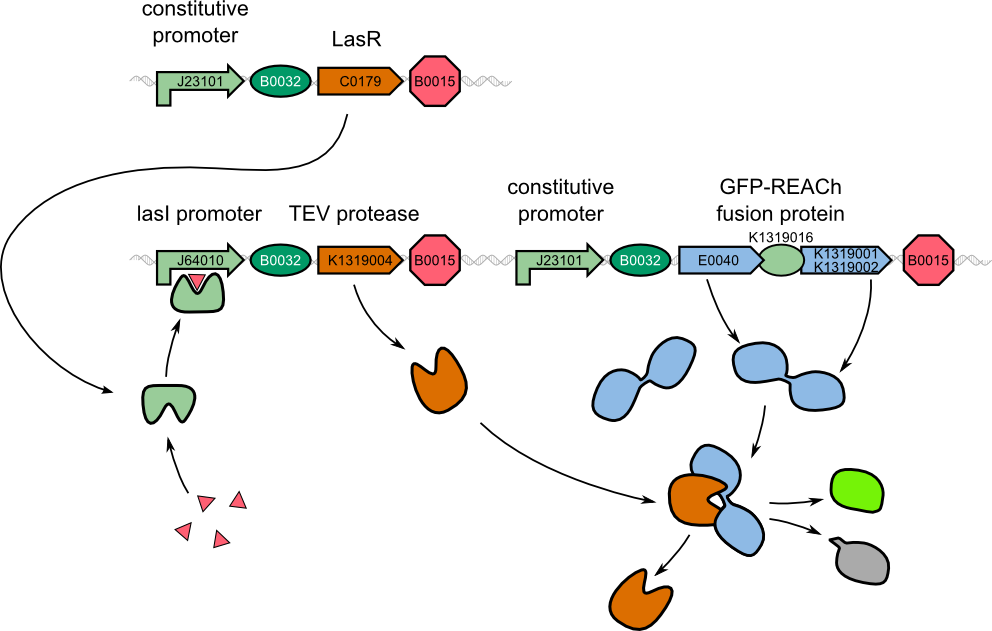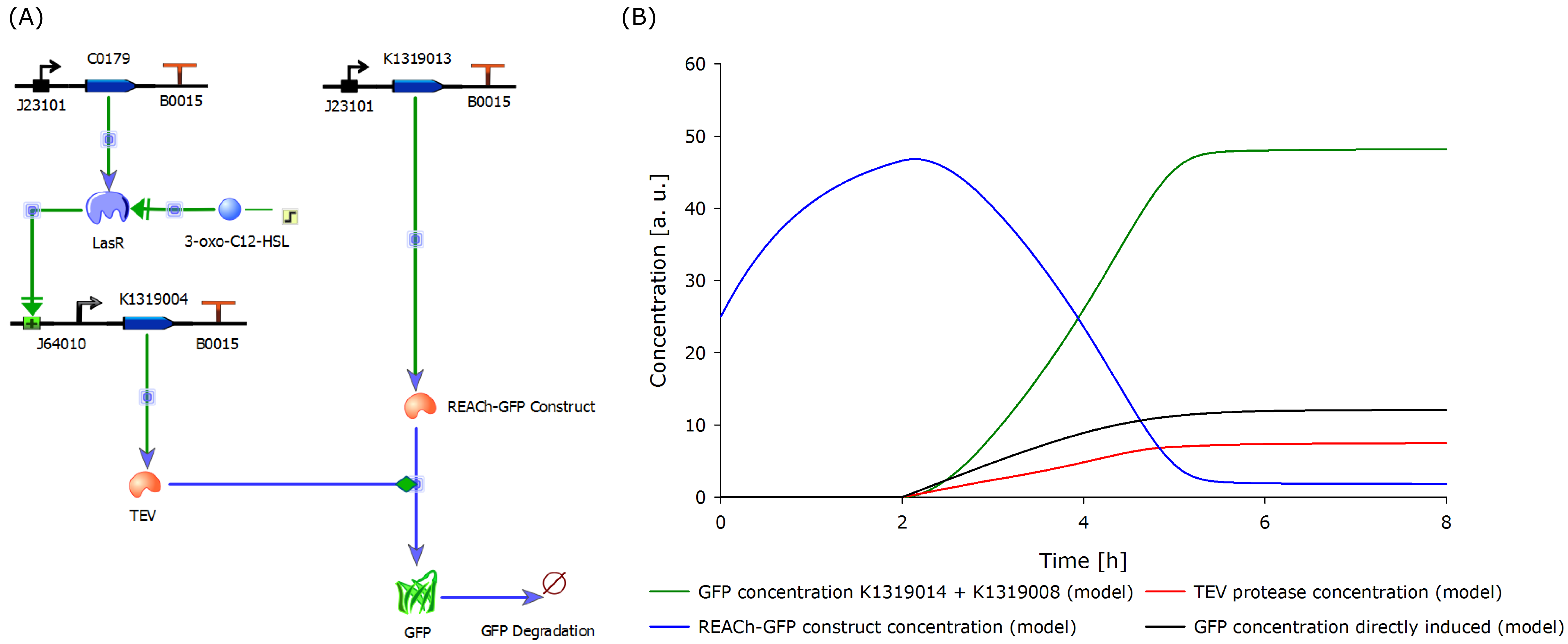Team:Aachen/Project/Model
From 2014.igem.org
(Difference between revisions)
(→Modeling) |
(→Modeling) |
||
| Line 6: | Line 6: | ||
=Modeling= | =Modeling= | ||
| - | Prior to the experiments a model of our molecular approach was built. | + | Prior to the experiments a model of our molecular approach was built to predict the results of our experiments. |
<center> | <center> | ||
| - | {{Team:Aachen/Figure|Aachen 14-10-16 REACh approach iFG.png|align=center|title=Our novel biosensor approach|subtitle=Expression of the TEV protease is induced by HSL. The protease cleaves the GFP-REACh fusion protein to elicit a fluorescence response.|width=900px}} | + | {{Team:Aachen/Figure|Aachen 14-10-16 REACh approach iFG.png|align=center|title=Our novel biosensor approach|subtitle=Expression of the TEV protease is induced by 3-oxo-C<sub>12</sub>HSL. The protease cleaves the GFP-REACh fusion protein to elicit a fluorescence response.|width=900px}} |
</center> | </center> | ||
| Line 17: | Line 17: | ||
</center> | </center> | ||
| - | The novel biosensor approach was modeled as shown above. The plotted results also include a model of a direct expression of GFP as it appears in traditional biosensors. The strength of the promotor used for the traditional approach is twice as high as the strength of the promotor upstream of the TEV coding sequence in our novel approach. Despite the stronger promotor, a '''higher GFP concentration is generated in the model of the novel biosensor''', proving the stronger and faster | + | The novel biosensor approach was modeled as shown above. The plotted results also include a model of a direct expression of GFP as it appears in traditional biosensors. The strength of the promotor used for the traditional approach is twice as high as the strength of the promotor upstream of the TEV coding sequence in our novel approach. Despite the stronger promotor, a '''higher GFP concentration is generated in the model of the novel biosensor''', proving the stronger and faster fluorescence response of our construct in theory. |
{{Team:Aachen/Footer}} | {{Team:Aachen/Footer}} | ||
Revision as of 00:25, 17 October 2014
 "
"

